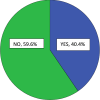Prevalence and predictors of common mental disorders among mothers of preterm babies at neonatal intensive care units in Ghana
- PMID: 39349546
- PMCID: PMC11442991
- DOI: 10.1038/s41598-024-72164-x
Prevalence and predictors of common mental disorders among mothers of preterm babies at neonatal intensive care units in Ghana
Abstract
The impact of preterm babies' admission at the Neonatal Intensive Care (NICU) on the mental health of mothers is a global challenge. However, the prevalence and predictors of Common Mental Disorders (CMDs) among this population remain underexplored. This study assessed the predictors of CMDs among mothers of preterm infants in the NICUs in the Upper East Region of Ghana. A cross-sectional study was conducted, targeting mothers of preterm babies in two hospitals in the Upper East Region. The Self-Report Questionnaire (SRQ-20) was used to collect data from 375 mothers of preterm babies admitted to the NICUs. Statistical analyses were done using SPSS version 20. The study found a prevalence of 40.9% for CMDs among mothers of preterm babies admitted to the two NICUs. The predictors of CMDs were unemployment (aOR 2.925, 95% CI 1.465, 5.840), lower levels of education (aOR 5.582, 95% CI 1.316, 23.670), antenatal anxiety (aOR 3.606, 95% CI 1.870, 6.952), and assisted delivery (aOR 2.144, 95% CI 1.083, 4.246). Conversely, urban residence (aOR 0.390, 95% CI 0.200, 0.760), age range between 25 and 31 (aOR 0.238, 95% CI 0.060, 0.953), and having a supportive partner (aOR 0.095, 95% CI 0.015, 0.593) emerged as protective factors. This study emphasizes the imperative of addressing maternal mental health within the NICU setting for preterm births.
Keywords: Mental disorders; Neonatal intensive care units; Predictors; Preterm babies; Prevalence.
© 2024. The Author(s).
Conflict of interest statement
The authors declare no competing interests.
Figures
Similar articles
-
Prevalence and risk factors for postpartum depression and stress among mothers of preterm and low birthweight infants admitted to a neonatal intensive care unit in Accra, Ghana.Int J Gynaecol Obstet. 2025 Apr;169(1):131-137. doi: 10.1002/ijgo.15998. Epub 2024 Oct 30. Int J Gynaecol Obstet. 2025. PMID: 39475422 Free PMC article.
-
Factors associated with common mental disorders among breastfeeding mothers in tertiary hospital nurseries in Nigeria.PLoS One. 2023 Mar 9;18(3):e0281704. doi: 10.1371/journal.pone.0281704. eCollection 2023. PLoS One. 2023. PMID: 36893141 Free PMC article.
-
Psychosocial experiences of mothers of preterm babies admitted to the neonatal intensive care unit of the Upper East Regional Hospital, Bolgatanga: a descriptive phenomenological study.BMJ Open. 2024 Sep 24;14(9):e086277. doi: 10.1136/bmjopen-2024-086277. BMJ Open. 2024. PMID: 39317505 Free PMC article.
-
Association between Neonatal Intensive Care Unit Admission and Supine Sleep Positioning, Breastfeeding, and Postnatal Smoking among Mothers of Late Preterm Infants.J Pediatr. 2020 Dec;227:114-120.e1. doi: 10.1016/j.jpeds.2020.07.053. Epub 2020 Jul 19. J Pediatr. 2020. PMID: 32698029
-
Prevalence of preterm birth and associated factors among mothers who gave birth in public hospitals of east Gojjam zone, Ethiopia.BMC Pregnancy Childbirth. 2023 Mar 24;23(1):204. doi: 10.1186/s12884-023-05517-5. BMC Pregnancy Childbirth. 2023. PMID: 36964535 Free PMC article.
References
-
- Shapiro-Mendoza, C. K. et al. CDC grand rounds: Public health strategies to prevent preterm birth. Morb. Mortal. Wkly. Rep.65(32), 826–830 (2016). - PubMed
-
- Ohuma, E. O. et al. National, regional, and global estimates of preterm birth in 2020, with trends from 2010: A systematic analysis. The Lancet402(10409), 1261–1271 (2023). - PubMed
MeSH terms
LinkOut - more resources
Full Text Sources
Medical


